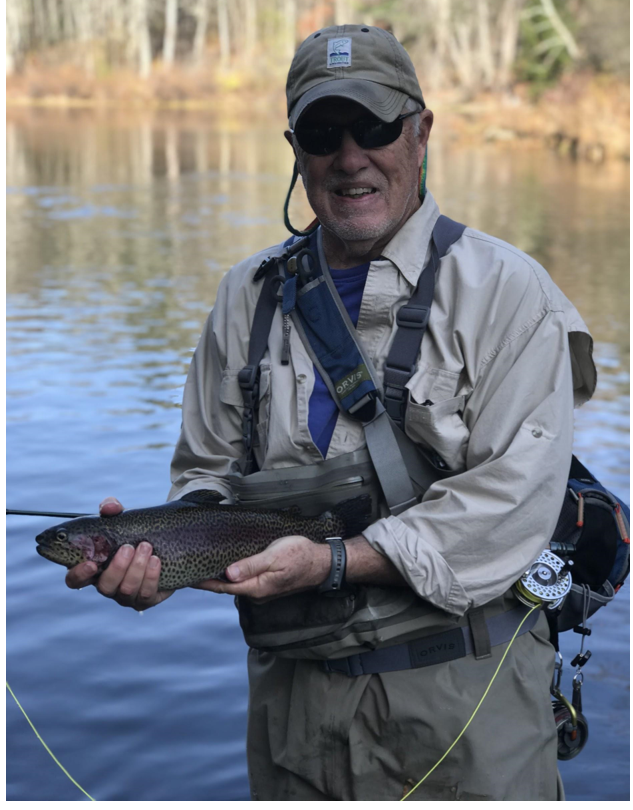WRITING ON THE FLY
By GEORGE LISET
I have been enjoying fly fishing from my float tube. This morning, however, I had a few hours to myself before the day got too busy. I realized I had not visited some of my local small streams in a while. The day was beautiful, and should I say it, almost Fall like. In the back of my mind there was an immediacy to that thought. The lack of rain has put a strain on my small streams in southeast New Hampshire.
The lack of precipitation has caused most rivers and streams to be at summer levels and going South quickly. If I wanted to get any small stream fishing near home, I needed to do it soon. Fishing small streams calls for a change of mindset and equipment. This is one reason I can justify so many fly rods.
Fly rods have sizes for this reason. Sizes range from 1-12, one being the lightest and usually shortest to twelve being the heaviest and longest, Fly fishers starting out usually purchase a size 6 fly rod which is an all-purpose size. Size 6 allows one to fish smaller panfish and Trout to bigger Trout and small Salmon. The fly rods are usually fished with a corresponding numbered reel.
I enjoy my eight-foot three weight Orvis Superfine with matching reel for small streams. The outfit happened to be conveniently stored by the back door. I put on my waders and drove over to Barrington to the Isinglass River which has a number of easy access points. I started up the river by the golf course and fished a couple of runs and pools. The water temperature was in the upper 60’s which is not ideal for Trout. I wasn’t having much luck fishing a size 18 Caddis with a nymph dropper.rout
I then fished just the Caddis in a pool and caught a couple of Shiners. I then headed down river where there was more shade and some deeper runs. Still using the Caddis I had no luck, so I then switched over to a size 20 wet fly/emerger pattern. A size 20 is usually the smallest size I will fish. Smaller than that I need someone who can see to tie my fly on. If there are not younger eyes around I am in trouble, even with cheaters on.
A few casts later and I found a small trout that I coaxed out of the shadows. That was encouraging. I remember a New Hampshire Fish and Game biologist talking about a study she did on native Brook Trout. The biologist then mentioned that small Brook Trout are a sign of a healthy river. The biologist then had me guess as to what the average size of a New Hampshire Brook Trout was. I guessed six inches.
After going around New Hampshire and electro-shocking the rivers and streams to check their health and the Native Brook Trout population, she told me the answer was about 3”. The biologist also told me where the biggest Brook Trout in the state are. So you will have to keep reading my column if you want to find out.
If small stream fly fishing is something you enjoy, I would get out soon. Later on in the summer you will have to head north above the notches to find the spring-fed cooler water. Remember, smaller flies will be the ticket to small stream success.
George Liset of Dover is an outdoor writer and avid fly fisherman who shares insights of his time on the water exploring New Hampshire streams and rivers as well of those around New England. George is a graduate of Wheaton College, Illinois, and the University of New Hampshire.
Credit: Source link






























